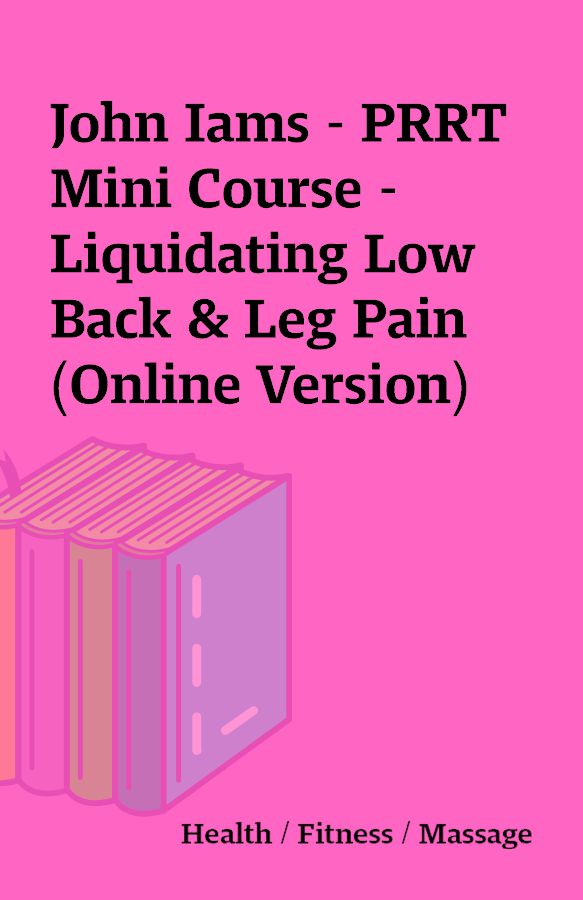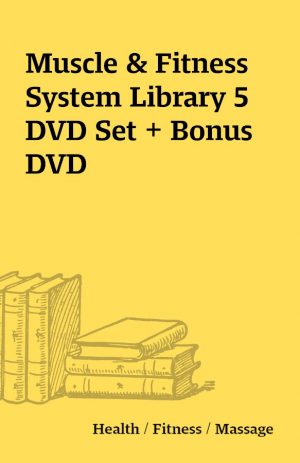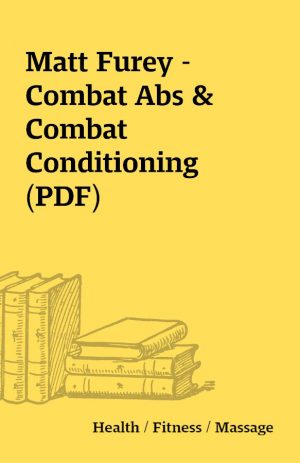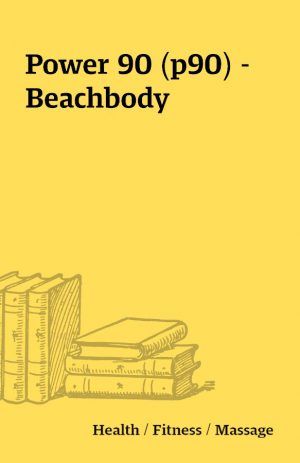John Iams – PRRT Mini Course – Liquidating Low Back & Leg Pain (Online Version)
John Iams – PRRT Mini Course – Liquidating Low Back & Leg Pain (Online Version)
[ Webrip – 1 MP4 , 2 PDF ]
Description
**** elib.tech Exclusive ****Help us keep elib.tech all the more special for its exclusivity.Out of respect for the original authors and publishers,please do not make this product available outside of our community.Thanks for keeping elib.tech awesome! GB Status : CLOSED GB Page : PRRT – Primal Reflex Release Technique™ GB PRRT—Quick and Effective Manual TherapyThe Primal Reflex Release Technique™ (PRRT, pronounced “pert”) is a manual-therapy approach for evaluating and relieving musculoskeletal pain. PRRT is often able to accomplish in just seconds what joint mobilization and manipulation, trigger point therapy, and soft tissue and myofascial release can do over time.PRRT has been found effective in more than 80% of patients with painful conditions. How can it be so successful? PRRT is based on the premise that over-stimulation of the body’s primal reflexes creates pain and keeps painful patterns occurring again and again. These reflexes — startle, withdrawal, and the protective joint reflexes–are hardwired into the nervous system of the body for the purpose of survival. When a person experiences a painful or startling event, these reflexes are triggered in an attempt to protect the body.Unfortunately, these reflexes often persist in a state of hyper-readiness long after the triggering event has passed. When sustained over time, activated reflex responses lead to patterns of pain that are reproduced, repeated, and maintained, interfering with healing and resisting therapeutic efforts to restore natural function.PRRT addresses muscle and joint receptors along with their spinal modulation. These often overlooked and seldom-treated areas of the body are the cause and solution for many types of pain, including:Restricted motionPain with or without motionReduced spontaneity of motionMuscle tightness, stiffness, and/or tensionThe Primal Reflex Release Technique™ treatment system offers an innovative combination and application of techniques that facilitate rapid “neural reboot.” This neural reboot resets the neural control of joints, muscles, and fascia to release joint restrictions, trigger points, and fascial restrictions not unlike when you reboot your computer.Why Haven’t We Looked at the Most Primal of All Systems, the Reflexes?It seems obvious that the reflexes found at the spinal cord and brain stem levels should be considered in musculoskeletal assessment as they are with PRRT. Yet in courses, textbooks, and journals that address treating musculoskeletal issues, the neuro-physiological basis underlying muscle and joint protective mechanisms is generally ignored or overlooked.You may have noticed that many patients you see have some degree of “splinting” in the injured area. This splinting is of a protective nature, and is often referred to as muscle spasms. The relationship of muscle spasms to musculoskeletal pain is another enigma, as it, too, has little literature elucidating its physiological basis.Fortunately, John Iams has researched and evolved a method that takes into account reflexes and addresses splinting and muscle spasms and their relationship to musculoskeletal pain. PRRT elegantly and rapidly assesses and treats using the very reflexes we were gifted within our muscles, tendons, joint capsules, and even skin.PRRT—Helping You Help Your PatientsThe assessment and treatment of overly protective joint and muscle reflexes is a natural addition to any pain-relief practice. It will blend seamlessly with any other techniques you may use, and will enhance their effectiveness by removing the barrier of resistance that primal reflexes trigger. The PRRT methods often eliminate or alleviate pain in as little as one treatment. The quick results make treatment affordable for patients, and the specialized training is easy to master.PRRT is used to great effect in over a dozen countries worldwide by nearly 2,000 practitioners. Practitioners have found PRRT to be very effective used in conjunction with other therapies, such as:Physical TherapyMassage and BodyworkChiropracticBowenManual TherapyCranialOsteopathySports MedicineAcupuncturePersonal TrainingThe combined result is quick relief of most musculoskeletal, even chronic pain. Patients often see lasting, markedly reduced or eliminated pain after only one treatment. In fact, PRRT must show pain relief within one to two sessions or it is likely not the answer for that patient’s condition.Low Back & LegThe source and solution for many of the pain issues people complain of in the leg and even the lower back can be traced to a seldom considered issue in the ankle region.Learning how to rapidly screen for the important findings and equally rapidly make the corrections often can yield dramatic improvement in leg and low back complaints. The relationship of how weight is accepted as the foot makes contact with the ground can set in motion altered biomechanics which can then become a source of pain.It seems so obvious when this critical piece of the pain puzzle is found… but it seldom is!It related to a prior injury that goes unreported in virtually all cases.There’s nothing more frustrating to you & your patient than to try everything you think is obvious and then for the patient to still have residual leg and possibly back pain.Did you know, a region in the ankle can adversely affect the following joints if not properly screened and resolved?FootKneeHipSILower backIn Liquidating Low Back & Leg Pain I will show you how to quickly access and release an area that could have a profound affect on the rest of the body.http://superspinemember.com/low-back-and-ankle-pain/
You must be logged in to post a review.






Reviews
There are no reviews yet.